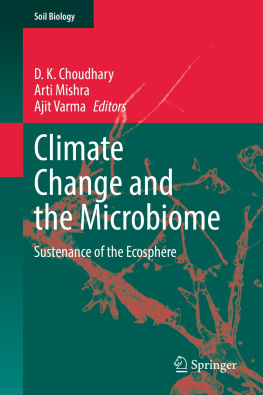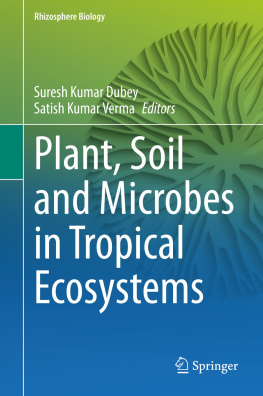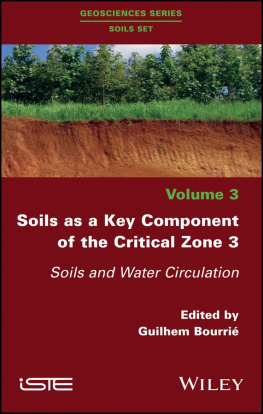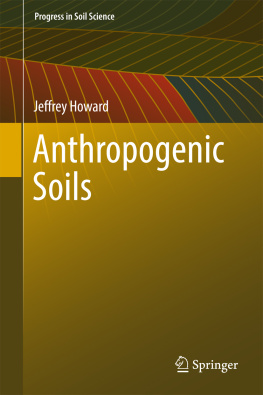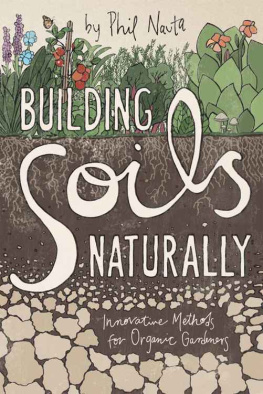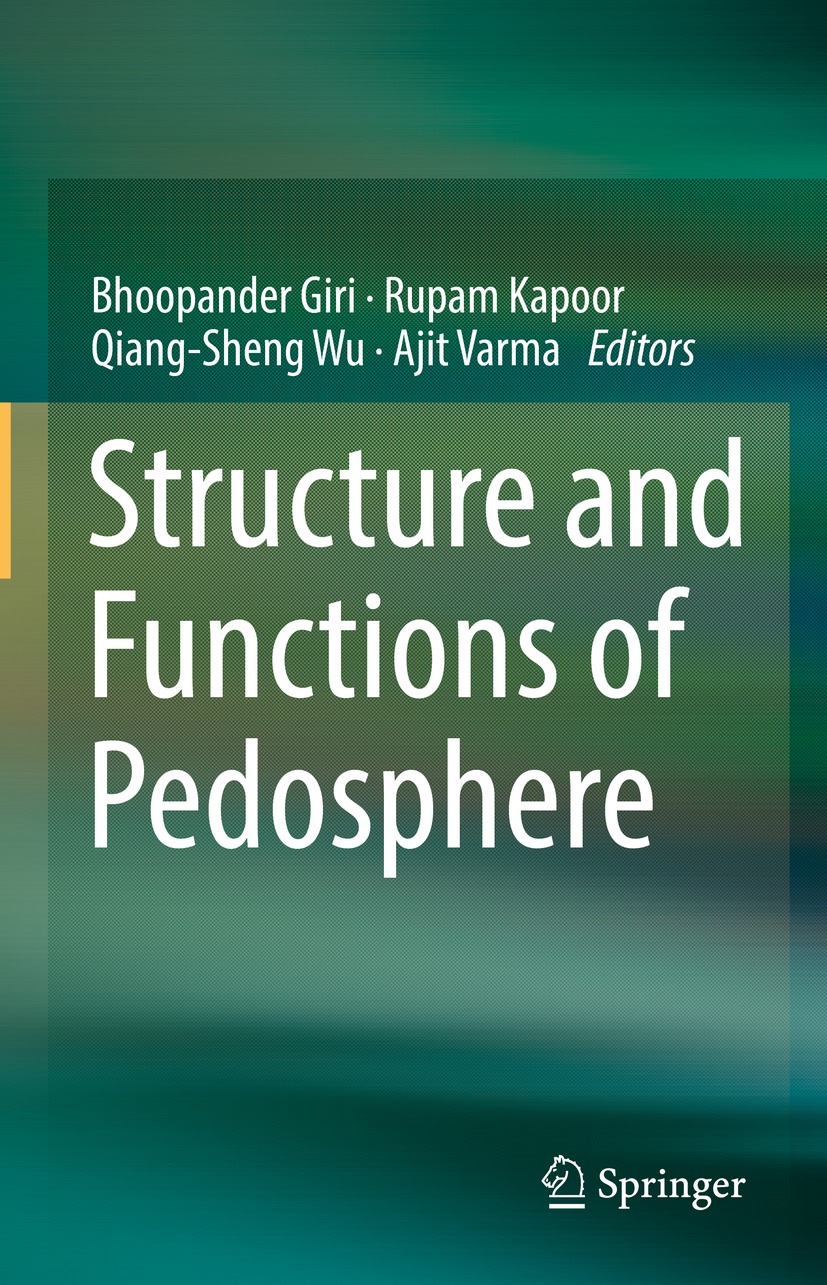Editors
Bhoopander Giri
Swami Shraddhanand College, University of Delhi, Delhi, India
Rupam Kapoor
Department of Botany, University of Delhi, Delhi, India
Qiang-Sheng Wu
College of Horticulture & Gardening, Yangtze University, Jingzhou, China
Ajit Varma
Amity Institute of Microbial Sciences, Amity University, Noida, Uttar Pradesh, India
ISBN 978-981-16-8769-3 e-ISBN 978-981-16-8770-9
https://doi.org/10.1007/978-981-16-8770-9
The Editor(s) (if applicable) and The Author(s), under exclusive license to Springer Nature Singapore Pte Ltd. 2022
This work is subject to copyright. All rights are solely and exclusively licensed by the Publisher, whether the whole or part of the material is concerned, specifically the rights of translation, reprinting, reuse of illustrations, recitation, broadcasting, reproduction on microfilms or in any other physical way, and transmission or information storage and retrieval, electronic adaptation, computer software, or by similar or dissimilar methodology now known or hereafter developed.
The use of general descriptive names, registered names, trademarks, service marks, etc. in this publication does not imply, even in the absence of a specific statement, that such names are exempt from the relevant protective laws and regulations and therefore free for general use.
The publisher, the authors, and the editors are safe to assume that the advice and information in this book are believed to be true and accurate at the date of publication. Neither the publisher nor the authors or the editors give a warranty, expressed or implied, with respect to the material contained herein or for any errors or omissions that may have been made. The publisher remains neutral with regard to jurisdictional claims in published maps and institutional affiliations.
This Springer imprint is published by the registered company Springer Nature Singapore Pte Ltd.
The registered company address is: 152 Beach Road, #21-01/04 Gateway East, Singapore 189721, Singapore
Preface
The term Pedosphere, derived from the Greek words pedonsoil and sphairasphere, was introduced in the monograph Pedology as independent natural-scientific discipline about the Earth. Pedosphere is the cover of the Earth where soil diversity occurs. In this sphere, the processes of soil formation remain active. Pedosphere exists at the interface of lithosphere, atmosphere, hydrosphere, and biosphere. It develops as a result of dynamic interactions between living organisms, unconsolidated regolith and consolidated bedrock, water present in the soil, on the soil and below the soil, and the air available inside the soil and above the soil. Pedosphere prevails below the vegetative cover of the biosphere and above the hydrosphere and lithosphere. It covers an insignificant thickness (in depth only one to two meters), however, enveloping the greatest density and diversity of the Life on the Earth. Indeed, pedosphere plays a fundamental role in the stable functioning of the biosphere, supporting life on the Earth and fostering favorable conditions for plants, animals, and humans as well.
Pedosphere is predicted to be a result of prolonged effects of solar radiation, atmospheric moisture, flora and fauna that prevail on the land surface, interaction of local climate, composition and structure of parent rocks, and the breakdown of minerals that ultimately leads to the formation of soil. In the pedosphere, all forms of soils possess a special type of structure and different organic and mineral components; thus, pedosphere as a whole plays very important roles in providing unique habitats for a huge diversity of life forms, developing a link between geological and biological substances circulation in the terrestrial ecosystems, making available vital mineral elements to plants and supporting human health as a lot of trace elements in the lithosphere are accessed by people through the formation of soils and utilizing such soils for food production.
Soils cover much of the Earths land surface and support the floral and faunal species of the Earth. Soil is a multi-phase system and, therefore, functions as a medium for plant growth, storage, supply, and purification of water, and an excellent habitat for various life forms. All these functions, in turn, transform soil properties. The current state of soil properties and functions is receiving more attention as the increasing anthropogenic activities (urbanization, industrialization, intensive use of chemicals in the agricultural fields, etc.) have become major sources of soil degradation and deterioration, which indeed accelerate loss of soil fertility and productivity. Therefore, to reduce the deterioration of the soil and to control the loss of soil biological productivity and biodiversity, it is important to promote the justified and judicious use of the soil resources.
The present volume Structure and Functions of Pedosphere written by the experts of this field comprises 17 chapters and covers latest research in the field of the pedogenesis/soil-forming processes, diversity of soils, soil functions, soil proteomics, impact of anthropogenic activities on the pedosphere, plant-microbe and microbe-microbe interactions in the pedosphere, life in the pedosphere, and factors influencing the formation and functioning of soil. We believe that with the opulence of information on different aspects of soil and its sustainability, this extensive volume is a valuable resource for researchers in the area of soil science, agronomy, and agriculture, as well as academicians and students in the broad field of botany, ecology, and microbiology.
We are very much delighted and thankful to all our contributing authors for their endless support and outstanding cooperation to write altruistically these authoritative and valuable chapters. We extend our sincere thanks to all our colleagues who helped us in the preparation and compilation of this generous volume. We also thank Springer officials specially Aakanksha Tyagi, Naren Aggarwal, William Achauer, Anil Chandy, and Jayesh Kalleri for their generous support and efforts to accomplishing this wide volume. We specially thank our families for consistent support and encouragement.
Bhoopander Giri
Rupam Kapoor
Qiang-Sheng Wu
Ajit Varma
Delhi, India Delhi, India Jingzhou, China Noida, Uttar Pradesh, India
Contents
Okon Godwin Okon and Ukponobong Efiong Antia
Lebin Thomas and Ishwar Singh
J. C. Tarafdar
Manisha Rani
Nguyen Hue
Yachana Jha
Gederts Ievinsh
Neemisha and Sandeep Sharma
Hodiayala Vasanaika Girish and Maddur Puttaswamy Raghavendra
Sanjib Kar
Ravichandran Koshila Ravi , Loganathan Pavithra and Thangavelu Muthukumar
Amit Singh Rana , Ashok Kumar Verma and Ashutosh Dubey
Gaurav Kumar , Pooja Baweja and Pinkey B. Gandhi
Sudip Sarkar , Rakesh Kumar , Abhay Kumar , Ujjwal Kumar , Dhiraj Kumar Singh , Surajit Mondal , Narendra Kumawat , Amitesh Kumar Singh , Rohan Kumar Raman , Prem Kumar Sundaram , Avinash Kumar Gupta and Sandeep Kumar Yadav




